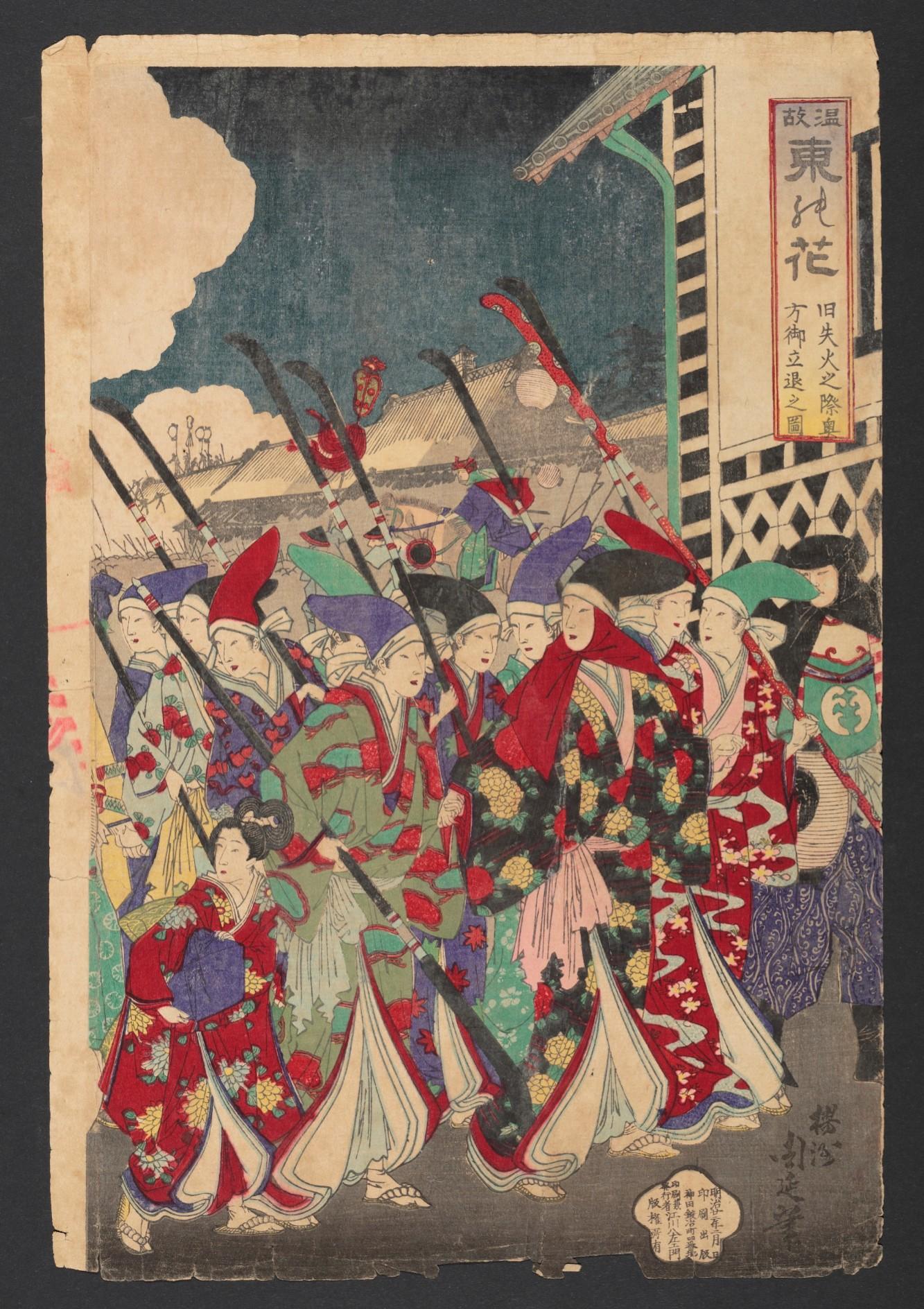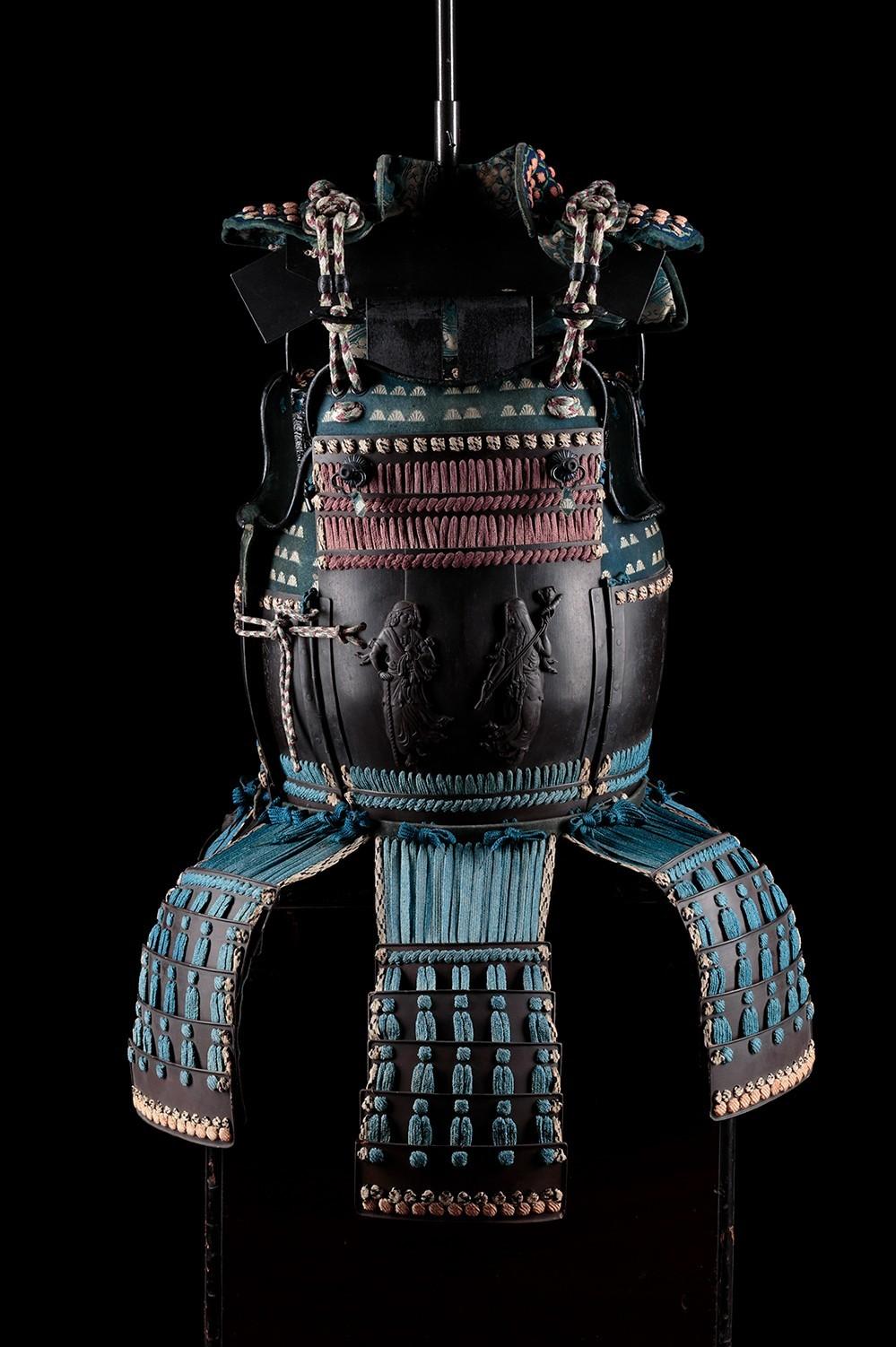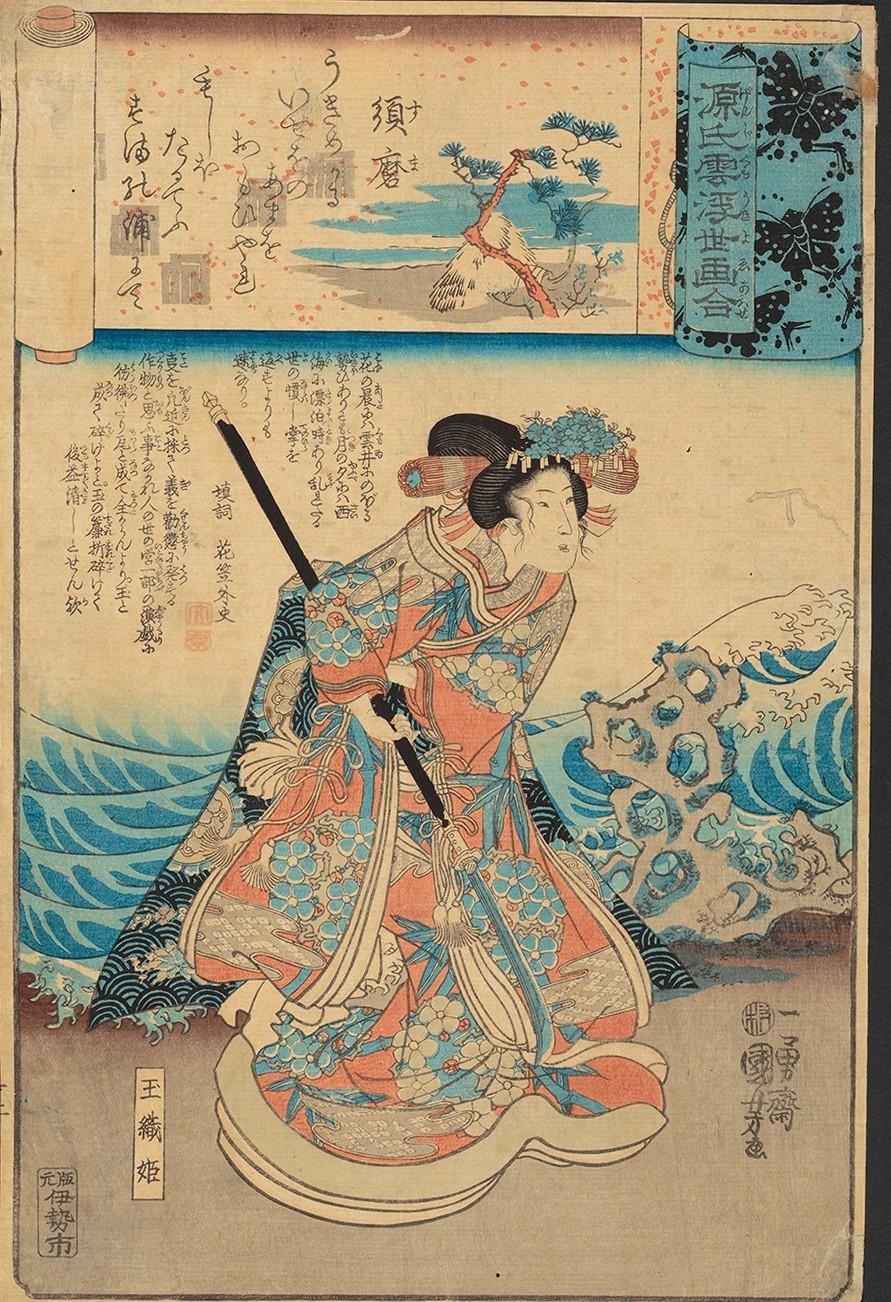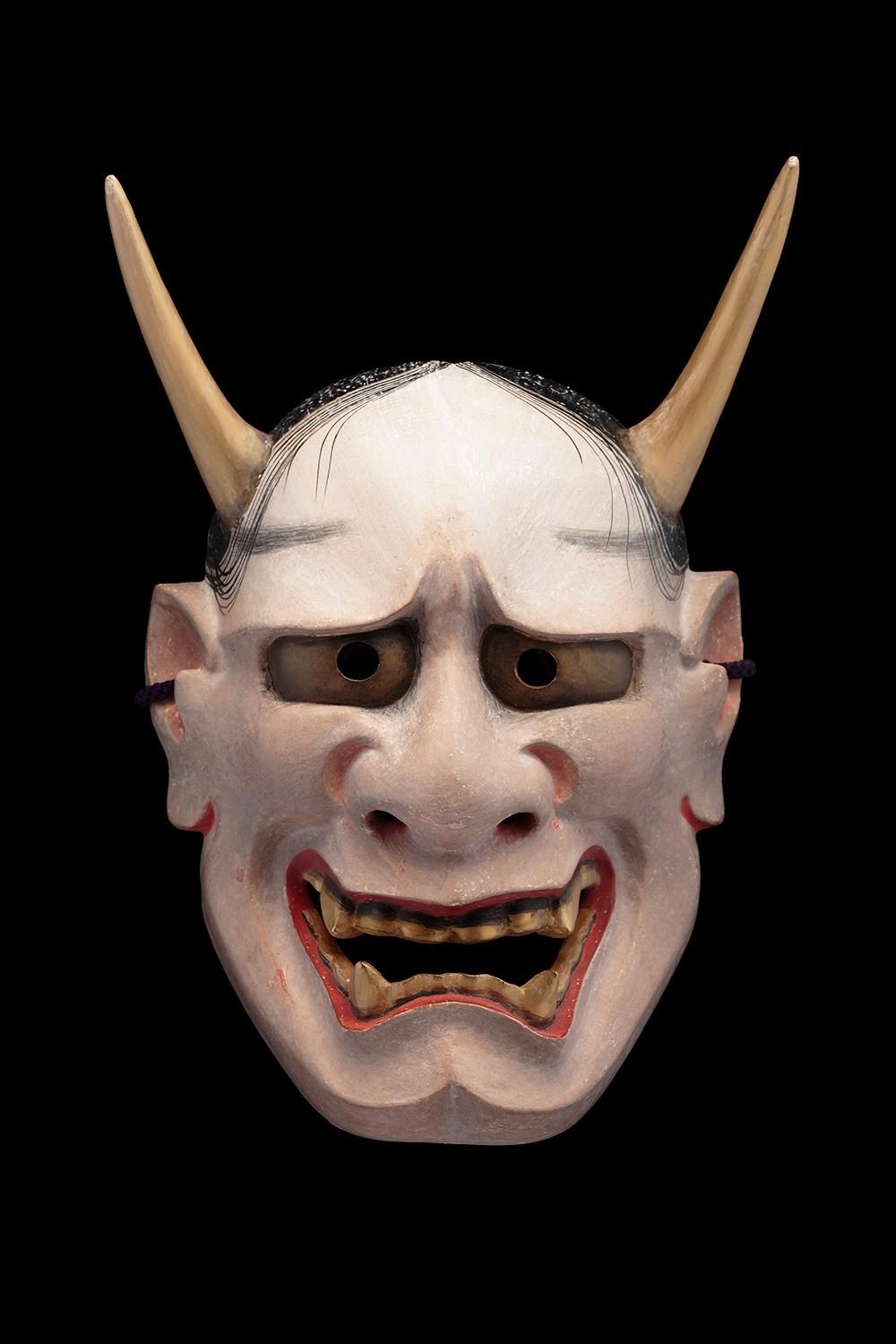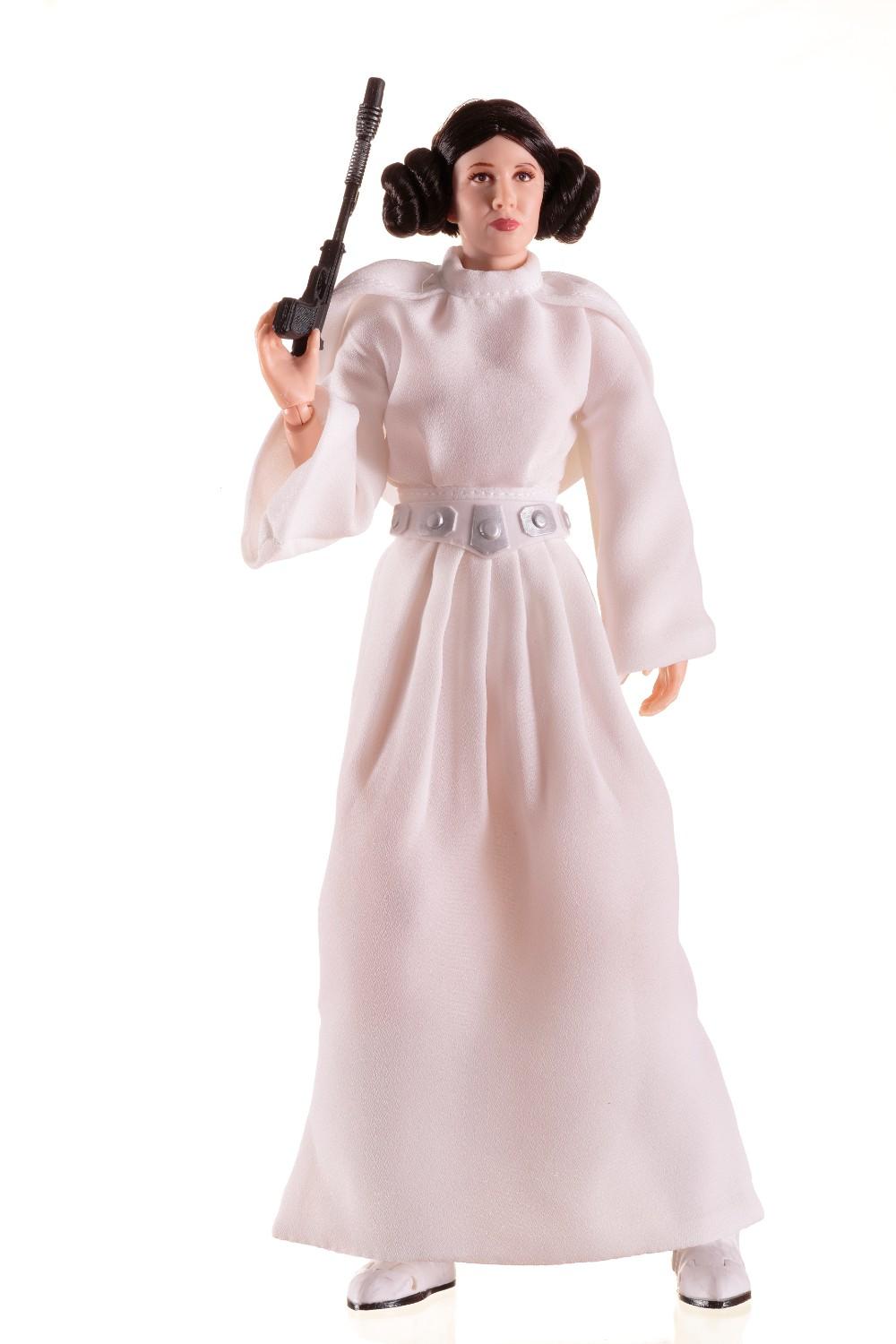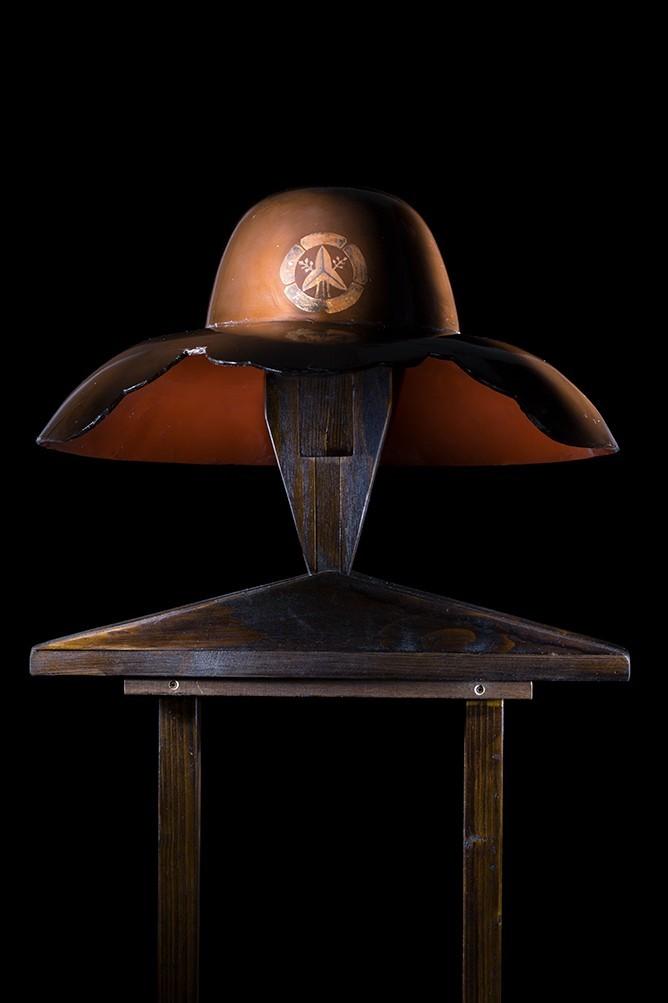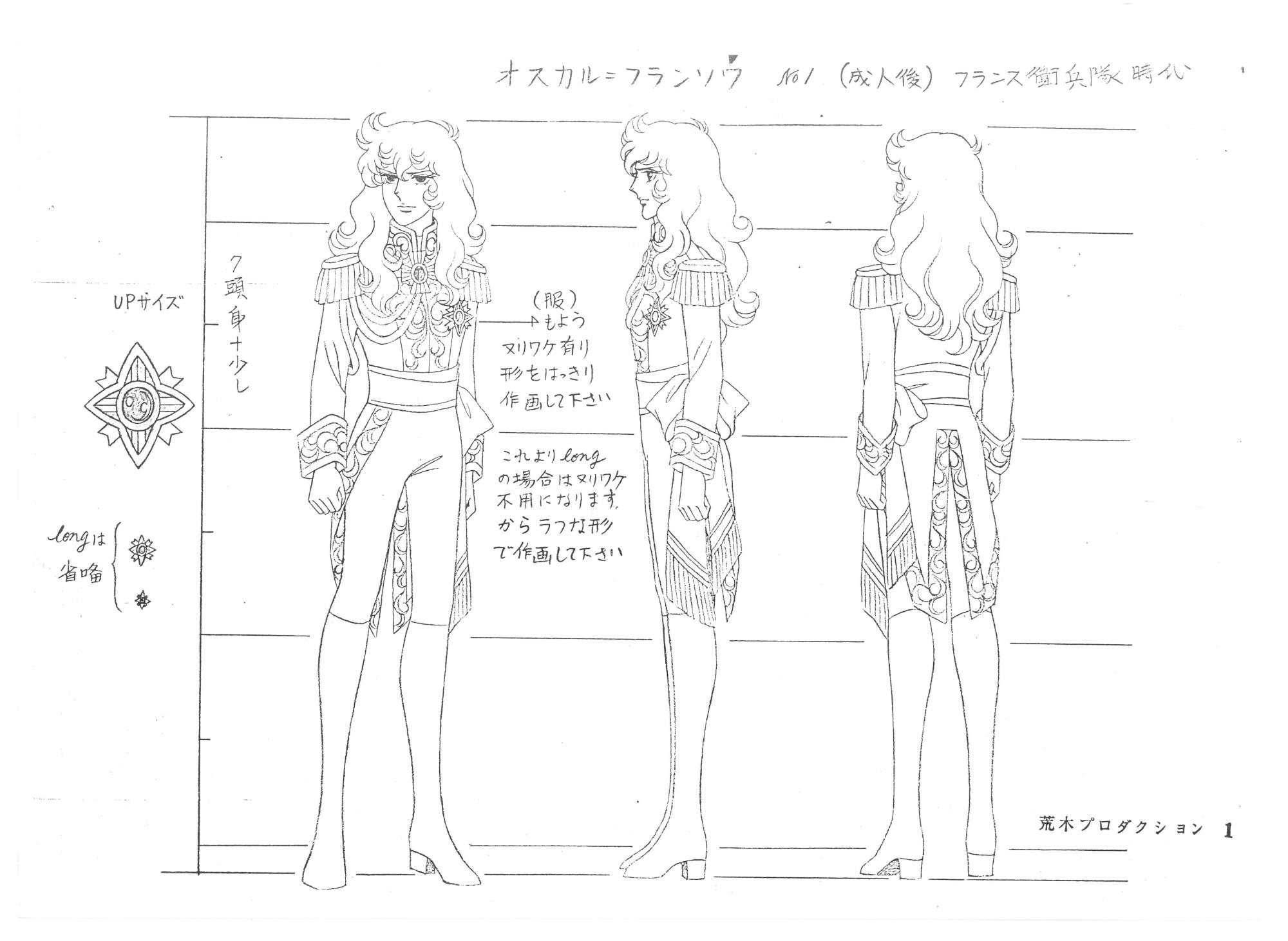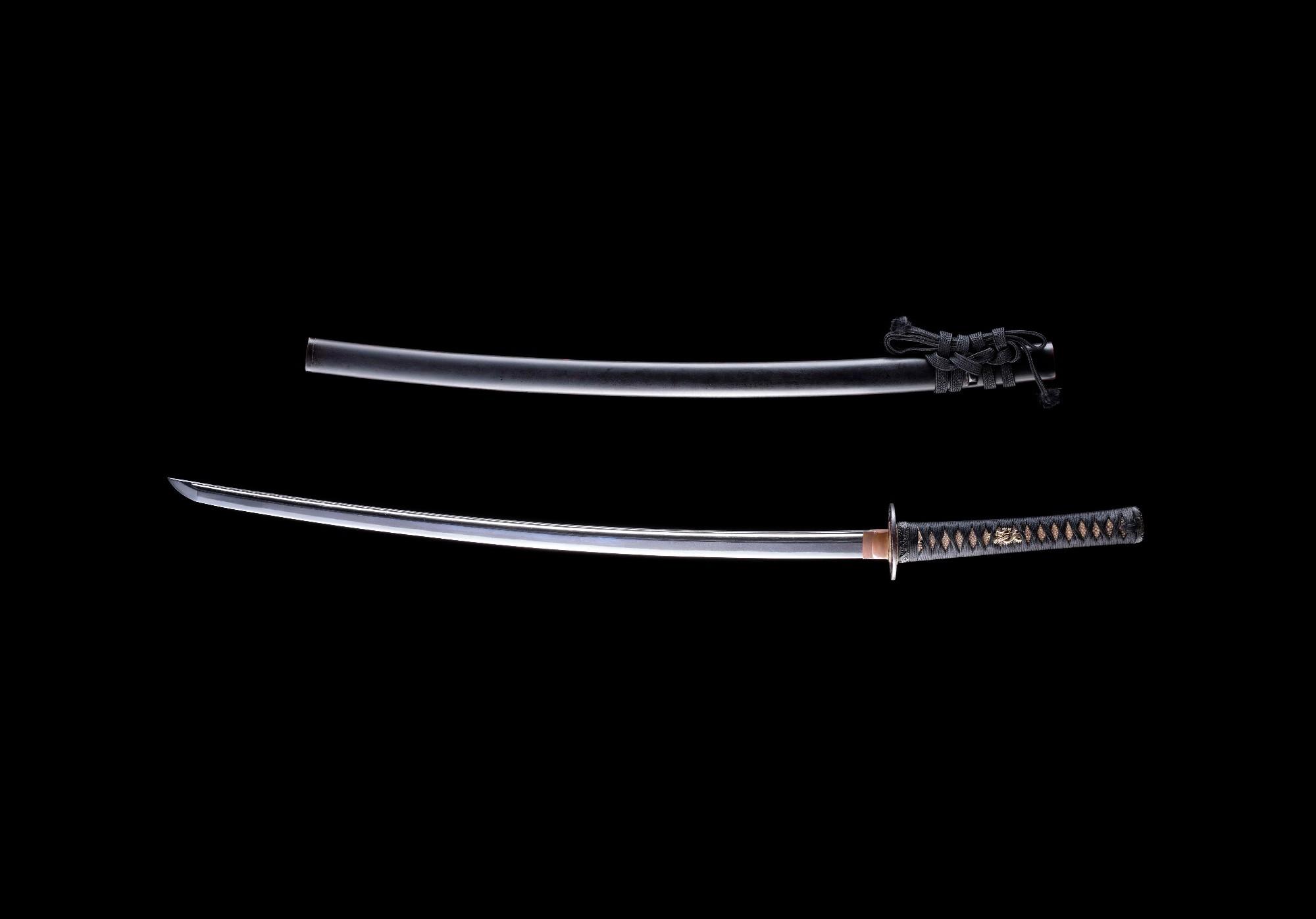The exhibition opens with historical and artistic objects that were part of the onna-bugeisha culture. The term onna-bugeisha refers to noble Japanese female warriors who belonged to the samurai class (bushi), were trained in martial arts and weaponry, and were therefore ready to fight along with their male counterparts in case of need. One of the most well-known onna-bugeisha was Tomoe Gozen (c. 1157-1247), a celebrated warrior who served under General Minamoto no Yoshinaka during the last feudal Japanese military government.
Among the most interesting pieces on display, there are a Tosei Gusoku, a breastplate of the Myochin school, and a Jingasa, a headgear, both made for women of the bushi class during the Edo period (1603-1868). Weapons such as knives, katana, kama, a sickle-style blade, and naginata, a pole weapon traditionally associated with the onna-bugeisha and frequently found as part of the dowry of a samurai’s daughter, are also on display. Masks from the Noh theatre show the impact of suffering and anguish on women’s faces.




